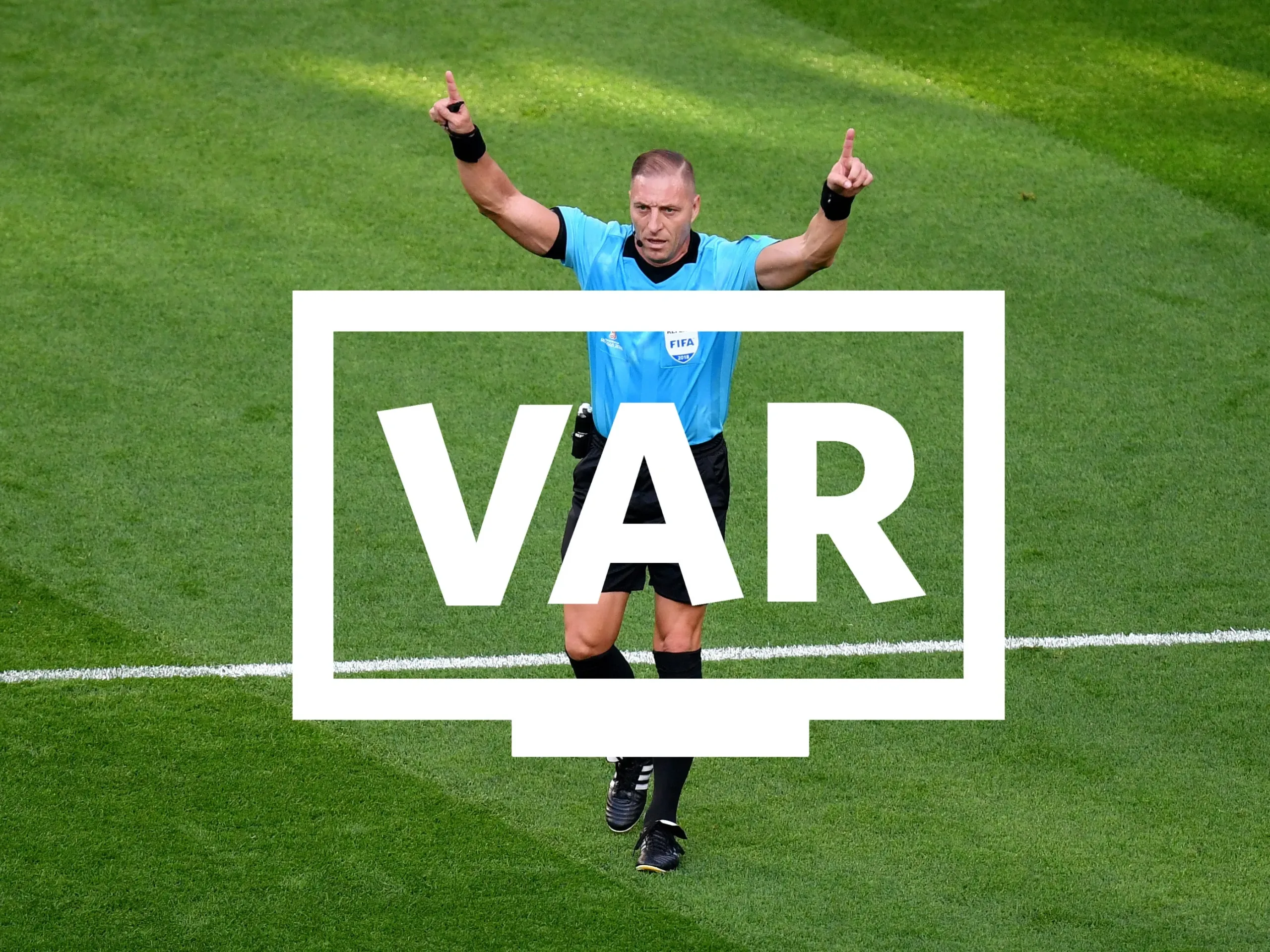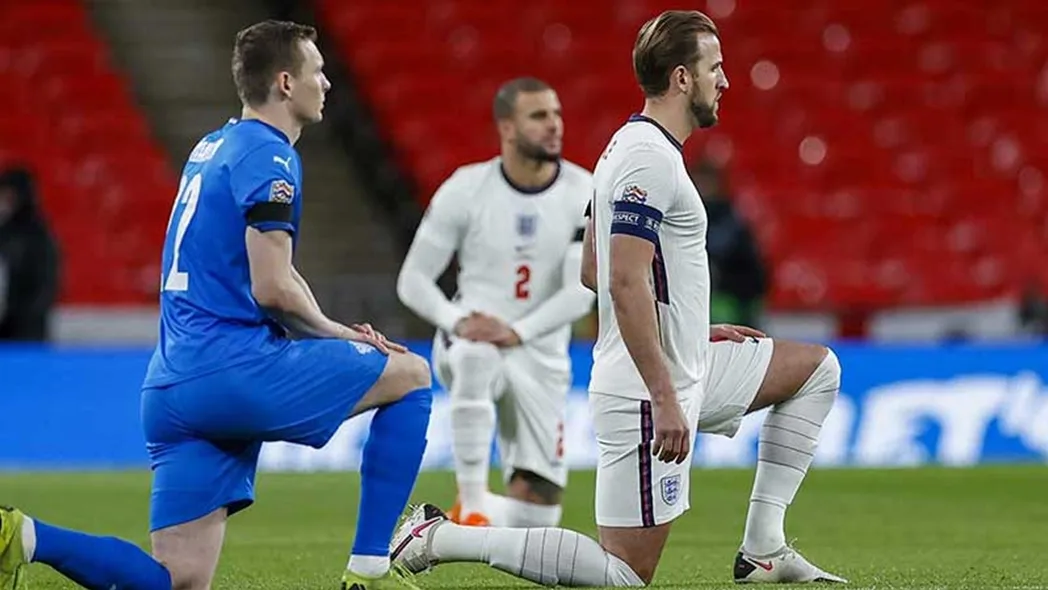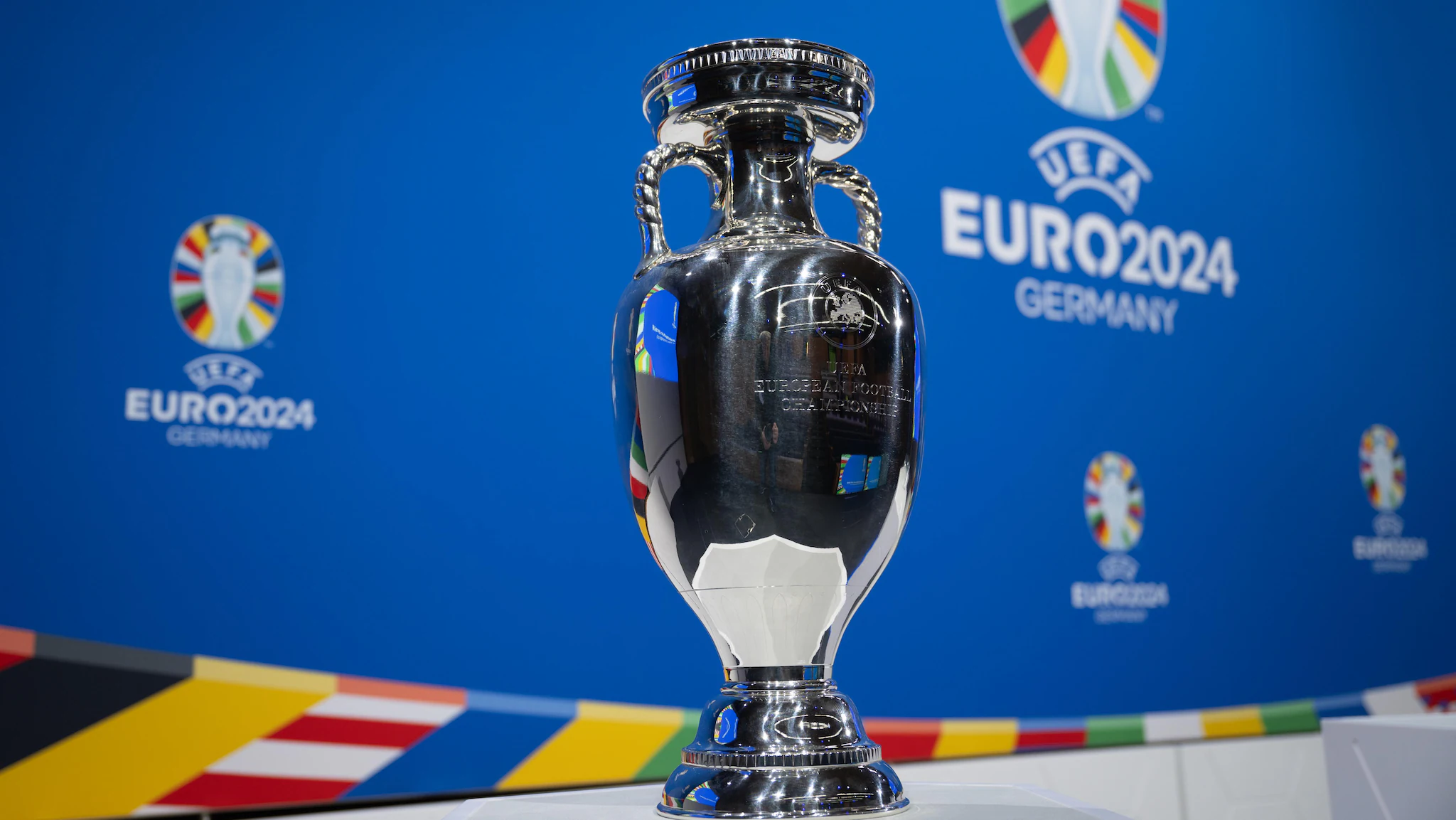VAR (Video Assistant Referee) technology is a system that has been introduced to football to help referees make better decisions. It is a system that is used to review decisions made by the on-field referee. The system is used to review goals, penalties, red cards, and mistaken identity incidents. VAR has been a topic of discussion in football since its introduction as it has changed the way the game is officiated.
The introduction of VAR technology has revolutionized the game of football. VAR is designed to assist the referee in making decisions that are as accurate as possible. The system has been developed to ensure that the game is played fairly and that the outcome of the game is not affected by incorrect decisions. VAR technology is used to review decisions that are made by the on-field referee. The system is used to review incidents such as fouls, penalties, red cards, and mistaken identity incidents.
Key Takeaways
- VAR technology is used to assist referees in making decisions that are as accurate as possible.
- The system is used to review incidents such as fouls, penalties, red cards, and mistaken identity incidents.
- The introduction of VAR technology has revolutionized the game of football.
Evolution of VAR in Football
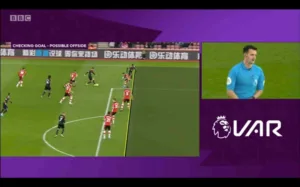
Video Assistant Referee (VAR) technology has become an integral part of modern football. The evolution of VAR in football is a fascinating journey that has seen the technology grow from a mere concept to a crucial tool in match officiating.
The idea of using technology to assist referees in making critical decisions during matches was first proposed by the Dutch Football Association in 2010. The association suggested that Video Match Officials (VMOs) could be used to help referees make decisions in situations where they might have missed an incident. However, it was not until 2016 that the International Football Association Board (IFAB) approved the use of VAR in football.
Since then, VAR has undergone several modifications to make it more efficient and effective. In 2018, FIFA introduced the VAR system at the World Cup, and it was successfully used in over 100 competitions worldwide. The system has continued to evolve, and today, it is an essential tool in match officiating in most football leagues worldwide.
The implementation of VAR technology has significantly reduced the number of errors made by referees during matches. According to a study by the Premier League, the introduction of VAR in the 2019/2020 season led to a 95% reduction in incorrect decisions in critical match incidents. This shows the impact that VAR technology has had on match officiating.
In conclusion, the evolution of VAR in football has been a fascinating journey that has seen the technology grow from a mere concept to a crucial tool in match officiating. The continued evolution of VAR technology will undoubtedly lead to more accurate and efficient match officiating in the future.
Technological Components of VAR
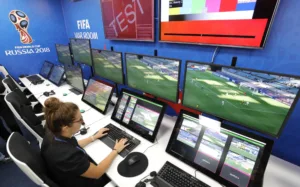
Video Assistant Referee (VAR) technology is a comprehensive system that involves several technological components. These components work together to ensure that the referees make accurate decisions during a football match.
Camera Systems
One of the most important components of VAR technology is camera systems. These camera systems are set up around the football pitch and provide multiple angles of the game. The footage captured by these cameras is then used by the VAR team to review the decisions made by the referee. The camera systems are designed to capture every detail of the game, including offside decisions, fouls, and goals.
Communication Equipment
Communication equipment is another crucial component of VAR technology. The VAR team uses headsets to communicate with the referee on the pitch. This communication equipment is used to keep the game moving smoothly and to ensure that the referee is aware of the decisions made by the VAR team. The communication equipment also helps the VAR team to provide real-time feedback to the referee.
Replay Software
Replay software is the final component of VAR technology. This software is used by the VAR team to review the footage captured by the camera systems. The replay software is designed to provide multiple angles of the game, slow-motion replays, and freeze frames. This allows the VAR team to review decisions made by the referee in real-time and provide accurate feedback.
In conclusion, VAR technology is a complex system that involves several technological components. The camera systems, communication equipment, and replay software work together to ensure that the referees make accurate decisions during a football match.
VAR Protocols and Procedures
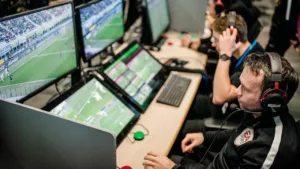
Incident Review Process
The Video Assistant Referee (VAR) is a match official who has independent access to match footage and may assist the referee only in the event of a ‘clear and obvious error’ or ‘serious missed incident’ in relation to goals, penalty decisions, direct red card incidents, and mistaken identity incidents. According to the IFAB VAR protocol, the VAR will only intervene when he/she has a clear and obvious error to correct. The on-field referee will always have the final decision.
On-field Referee Consultation
When the VAR identifies a clear error or missed incident, he/she will inform the on-field referee, who will then decide whether to conduct a review of the incident. The on-field referee can also request a review from the VAR if he/she is unsure about a decision. During the review, the on-field referee can either choose to rely on the VAR’s advice or conduct an on-field review using the sideline monitor. Once the on-field referee has made a decision, the VAR will inform him/her of the outcome.
Decision Communication
The decision-making process during VAR reviews can take a few minutes, and it is essential to communicate the outcome to the players, coaches, and fans. According to FIFA’s VAR Technology Standards, the on-field referee must communicate the decision to the players and the fans by using the stadium’s public address system or any other available communication method. The VAR team must also communicate the decision to the broadcasters and the media.
In summary, the VAR protocols and procedures aim to ensure that the on-field referee makes the correct decisions during the game. The VAR’s role is to assist the on-field referee in identifying clear errors or missed incidents, and the final decision always rests with the on-field referee. The communication of the decision is also crucial to ensure that everyone involved in the game is aware of the outcome.
VAR Impact on Decision Making
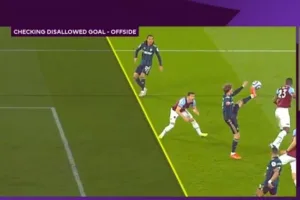
The implementation of Video Assistant Referee (VAR) technology in football has had a significant impact on decision-making during matches. Two key areas of impact are the accuracy of officiating and game flow and duration.
Accuracy of Officiating
VAR technology has been proposed to improve decision-making in sport officials. According to a report from the International Football Association Board, the VAR system has been accurate in 98.9% of decisions so far during its two-year worldwide trial [1]. This high level of accuracy has been achieved through the use of multiple cameras and angles, allowing referees to review and analyze incidents more closely and make more informed decisions.
One area where VAR has had a particularly significant impact is in offside decisions. Offside decisions have historically been difficult for referees to make accurately due to the speed of play and the position of players on the field. However, the use of VAR has allowed referees to review offside decisions more closely and make more accurate calls. According to a study, the introduction of VAR has reduced the number of incorrect offside decisions by 35% [2].
Game Flow and Duration
One concern with the introduction of VAR technology was that it would disrupt the flow of the game and lead to longer match durations. However, studies have shown that the impact on game flow and duration has been minimal. In fact, the average time taken to review a decision using VAR is just 30 seconds [2].
Additionally, the use of VAR has led to a reduction in the number of contentious incidents during matches. This has helped to reduce the amount of time wasted on arguments and confrontations between players and referees, allowing matches to flow more smoothly and efficiently.
In summary, the implementation of VAR technology in football has had a significant impact on decision-making during matches. The use of multiple cameras and angles has allowed referees to make more accurate decisions, particularly in offside situations. While there were concerns that the use of VAR would disrupt the flow of the game and lead to longer match durations, studies have shown that the impact has been minimal.
Controversies and Challenges
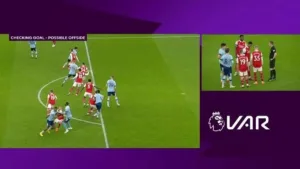
VAR technology has been subject to multiple controversies and challenges since its introduction to football. This section will explore some of the most significant issues that have emerged with the use of VAR in football.
Subjectivity in Decision Making
One of the most significant controversies surrounding the use of VAR technology in football is the subjectivity of its decision-making process. Although the technology is meant to provide objective and accurate decisions, it is still subject to interpretation by the on-field and off-field referees. This subjectivity has led to several controversial decisions that have caused frustration among players, coaches, and fans.
Technological Reliability
Another challenge with the use of VAR technology in football is its technological reliability. While the technology is meant to provide accurate decisions, it is not always reliable. Technical glitches and human error can cause incorrect decisions, which can have a significant impact on the outcome of a game.
Fans’ Experience
The use of VAR technology has also raised concerns about the fans’ experience of the game. The technology has led to longer stoppages in play, which can disrupt the flow of the game and lead to frustration among fans. Additionally, the use of VAR technology can cause confusion among fans who do not understand the technology or the decision-making process.
In conclusion, while VAR technology has the potential to improve the accuracy of decisions in football, it has also raised several controversies and challenges. The subjectivity of its decision-making process, its technological reliability, and its impact on fans’ experience are all significant issues that need to be addressed if the technology is to be widely accepted in football.
Training and Implementation
Referee Training
The implementation of VAR technology in football has led to an increase in the demand for highly trained and qualified referees. According to FIFA, the implementation assistance and approval program (IAAP) has been established to oversee training programs for those involved in the use of VAR systems. The program ensures that the same standards are applied when implementing VAR systems, which helps to tackle the related challenges.
Referees are trained to use the VAR system to make accurate decisions during the game. They are required to undergo extensive training on how to use the technology and how to work with the VAR team. The VAR team, on the other hand, is responsible for monitoring multiple screens and controlling video playback and camera angles to revisit in-game incidents.
Club and Player Adaptation
The introduction of VAR technology has also led to clubs and players adapting to the new system. Clubs are required to ensure that their stadiums meet the minimum standards for VAR technology. This includes providing the necessary equipment and ensuring that the technology is properly installed.
Players, on the other hand, are required to adapt to the new rules and regulations that come with the use of VAR technology. Players are now aware that they can be penalized for actions that were previously not seen by the referee. This has led to a change in the way players approach the game, with many now being more cautious in their actions.
Overall, the implementation of VAR technology in football has led to a significant change in the way the game is played and officiated. The training of referees and the adaptation of clubs and players to the new system has been crucial in ensuring that the technology is used effectively.
Global Adoption of VAR

The Video Assistant Referee (VAR) system has been adopted by several football associations worldwide. The technology has been implemented in FIFA tournaments and domestic leagues in different countries. This section will discuss the global adoption of VAR in FIFA Tournaments and Domestic Leagues.
FIFA Tournaments
VAR was first used in a FIFA tournament during the 2018 World Cup in Russia [1]. Since then, it has been used in other FIFA tournaments such as the 2019 Women’s World Cup and the 2021 Confederations Cup [2]. The technology has been well received in FIFA tournaments, with FIFA President Gianni Infantino saying that VAR has helped to increase fairness in the game [1].
Domestic Leagues
Several domestic leagues have also adopted VAR technology. The English Premier League (EPL) introduced VAR for the 2019/2020 season [3]. The technology has also been adopted in other European leagues such as the Spanish La Liga, the Italian Serie A, and the German Bundesliga [1]. In addition, VAR has been used in other domestic leagues such as the Australian A-League and the American MLS [4].
The adoption of VAR technology has been slow in some countries due to financial constraints and the need for proper infrastructure. However, the technology has been widely accepted in countries where it has been adopted, with many referees and players praising its effectiveness in improving decision-making and reducing errors.
Future Developments in VAR Technology

Advancements in AI
The use of Artificial Intelligence (AI) in VAR technology is one of the most promising future developments in football. AI can help referees make decisions faster and more accurately, ensuring that there is less waiting during games. Better cameras and sensors can also be integrated with AI, which could help everyone understand what’s going on in the game better, like showing the player’s offside position in real-time. AI could also be used to track player movements and detect fouls, which could help reduce the number of incorrect decisions made by referees.
Integration with Other Technologies
VAR technology can be integrated with other technologies to improve the overall game experience. For example, Goal Line Technology (GLT) can be combined with VAR to ensure that goals are correctly awarded. GLT uses cameras and sensors to determine whether the ball has crossed the goal line or not. Similarly, Hawk-Eye technology can be integrated with VAR to track the ball’s movement and help referees make more accurate decisions. The use of drones and 360-degree cameras can also be integrated with VAR to provide a more comprehensive view of the game.
In conclusion, the future of VAR technology in football looks promising, with possible updates like using AI to make decisions faster and more accurately, and integrating it with other technologies to provide a more comprehensive view of the game. These developments will help referees make more accurate decisions, reduce the number of incorrect decisions made during games, and provide a better overall experience for football fans.
Frequently Asked Questions
How does VAR technology function during a football match?
VAR technology is used to assist on-field referees in making accurate decisions during a football match. It involves a team of video match officials (VMOs) who analyze footage from multiple camera angles in real-time to provide the referee with additional information on key match incidents. The VMOs can only intervene if there has been a “clear and obvious error” or “serious missed incident” by the on-field referee. After reviewing the footage, the VMOs can recommend that the on-field referee either maintains their original decision, modifies it, or reverses it.
What technological equipment is essential for the operation of VAR?
The essential technological equipment for the operation of VAR includes a video operation room (VOR), which contains multiple monitors displaying footage from various camera angles. The VOR is staffed by a team of VMOs who analyze the footage and communicate with the on-field referee via a headset. The on-field referee also wears an earpiece to receive communication from the VMOs. Additionally, there are cameras placed around the stadium to capture footage of key match incidents.
What are the specific rules governing the use of VAR in football?
The specific rules governing the use of VAR in football are outlined in the Laws of the Game, which are set by the International Football Association Board (IFAB). The rules state that the on-field referee has the final decision and can only be overruled if there has been a “clear and obvious error” or “serious missed incident.” The use of VAR is limited to four key match incidents: goals, penalty decisions, direct red card incidents, and cases of mistaken identity. The on-field referee can also choose to review other incidents at their discretion.
How has the introduction of VAR affected decision-making in football?
The introduction of VAR has led to a higher percentage of correct key match decisions. According to the Premier League, the percentage of correct key match decisions rose from 82% in the 2018/19 season to 94% in the 2019/20 season with the help of VAR. However, it has also led to longer stoppages in play, which can disrupt the flow of the game and lead to frustration among fans and players.
In which major football tournaments is VAR technology currently implemented?
VAR technology is currently implemented in several major football tournaments, including the FIFA World Cup, UEFA Champions League, English Premier League, Spanish La Liga, and Italian Serie A. It is also used in various domestic cup competitions and international tournaments.
What are the main criticisms and benefits of using VAR in football?
The main criticisms of using VAR in football include the longer stoppages in play, which can disrupt the flow of the game, and the potential for subjective interpretations of the footage by the VMOs. Some also argue that it takes away from the human element of the game and can lead to a loss of spontaneity. However, the benefits of using VAR include a higher percentage of correct key match decisions and a reduction in the number of controversial incidents. It also provides greater transparency and accountability in decision-making.
More Articles:
Also See: The Problem of Racism in Brazilian Football: A Clear Overview
Also See: Kings of Diving in Football History: A Look at the Most Notorious Players
